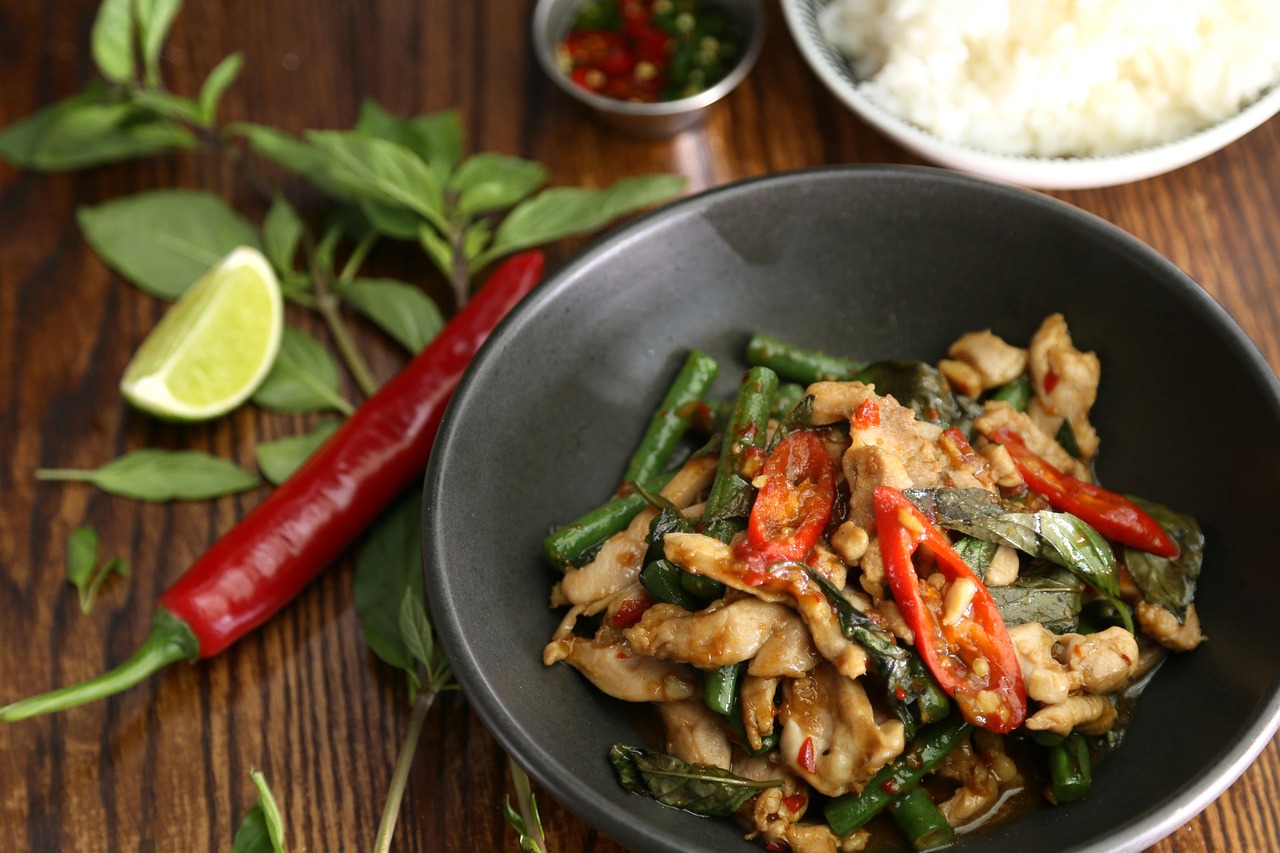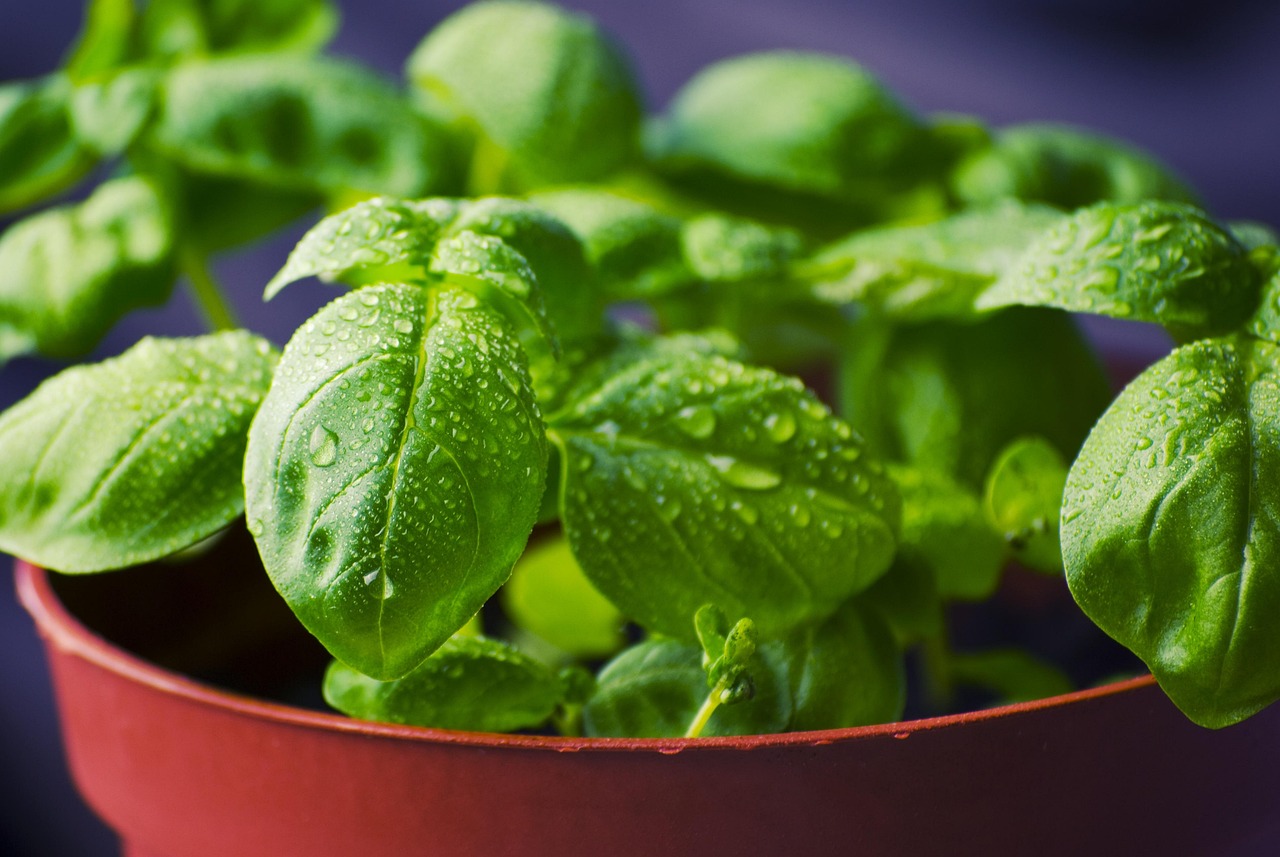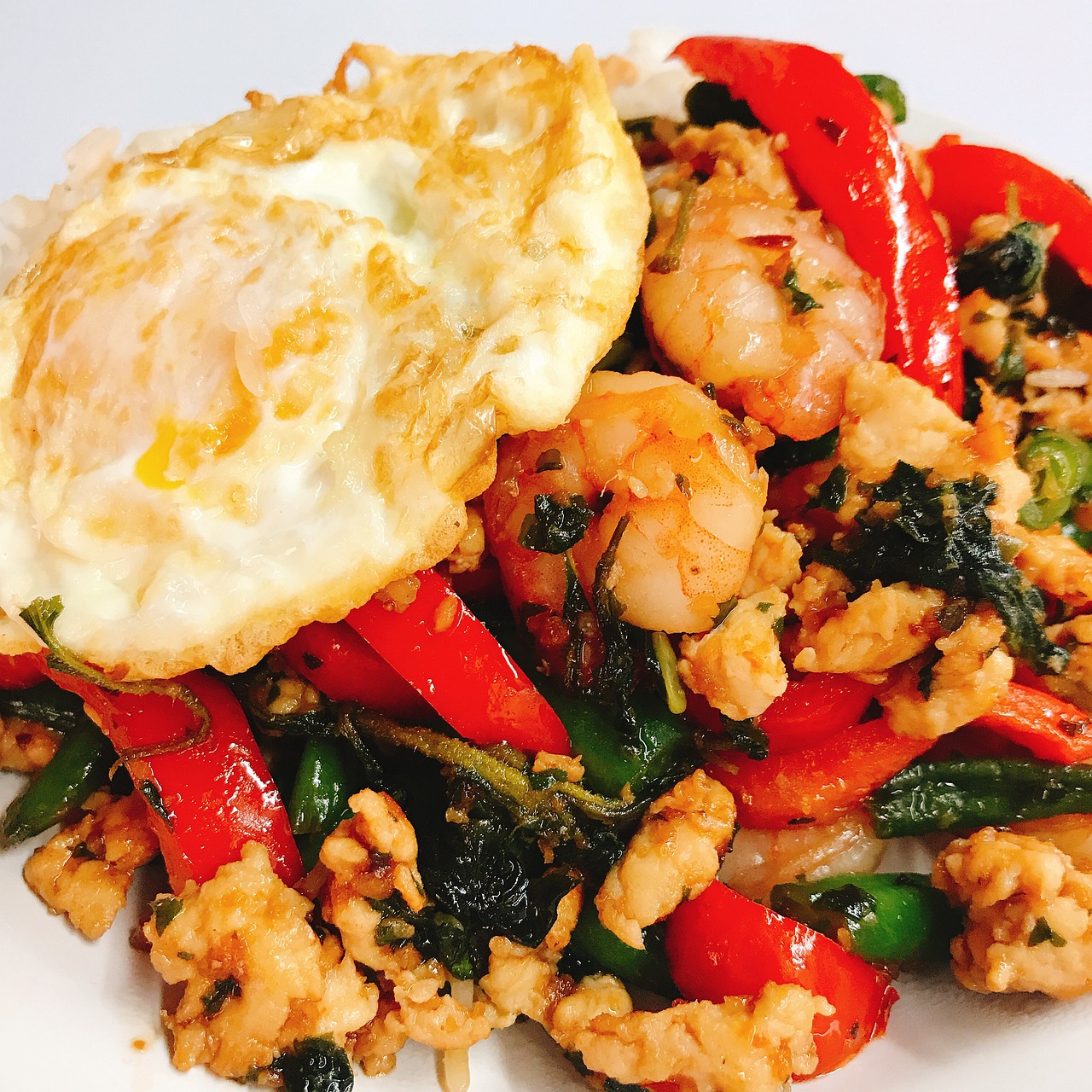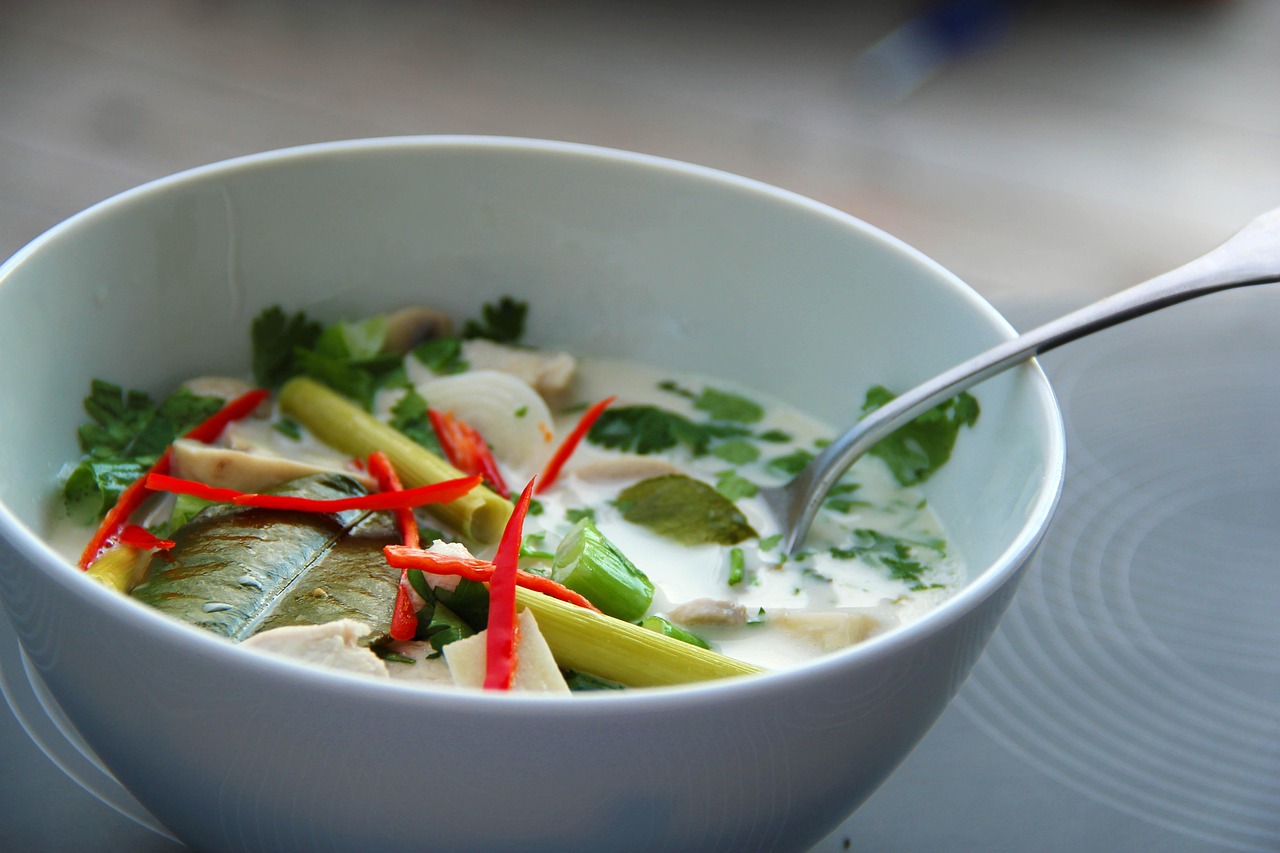To grow Thai basil successfully, provide it with plenty of sunlight, well-draining soil, and regular watering. Ensure the temperature stays above 50°F. Pinch back the tips to encourage bushy growth and prevent flowering, which can alter the flavor.
Understanding Thai Basil
Thai basil, known scientifically as Ocimum basilicum var. thyrsiflora, is a fragrant herb that is loved for its unique flavor and aroma. Often used in Southeast Asian cuisine, it adds a distinct taste to dishes such as curries, stir-fries, and salads. Unlike sweet basil, Thai basil has a slightly spicy flavor with hints of anise and clove, making it a favorite among chefs and home cooks alike.

This herb prefers warm weather and thrives in sunny environments. Growing Thai basil can be a rewarding experience, whether you are an experienced gardener or a novice. With the right conditions and care, you can enjoy a bountiful harvest of this aromatic herb throughout the growing season.
Growing Conditions for Thai Basil
To grow healthy Thai basil, it’s essential to create the ideal environment for the plant. Here are some key factors to consider:
| Factor | Recommended Level |
|---|---|
| Sunlight | 6-8 hours of direct sunlight per day |
| Soil Type | Well-draining, nutrient-rich soil |
| Temperature | 65°F – 85°F (18°C – 29°C) |
| Watering | Regularly, keep the soil moist but not waterlogged |
Planting Thai Basil
When planting Thai basil, you have the option to start from seeds or purchase young plants from a nursery. If you decide to grow from seeds, follow these steps:

- Select high-quality seeds from a reputable source.
- Start seeds indoors 6-8 weeks before the last frost date.
- Use seed-starting mix and plant seeds about ¼ inch deep.
- Keep the soil consistently moist and provide warmth (around 70°F).
- Once seedlings are 3-4 inches tall and the danger of frost has passed, transplant them outdoors.
If you prefer to buy young plants, choose healthy specimens with vibrant green leaves. Transplant them into your garden or containers after acclimating them to outdoor conditions for a few days.
Caring for Thai Basil
Caring for Thai basil involves regular maintenance to ensure healthy growth. Here are some tips:
- Watering: Water consistently, especially during dry spells. Aim for about 1 inch of water per week.
- Fertilizing: Use a balanced fertilizer every 4-6 weeks during the growing season to promote vigorous growth.
- Pest Control: Keep an eye out for common pests such as aphids and spider mites. Use organic insecticidal soap if needed.
- Pruning: Regularly pinch back the tops of the plants to encourage bushy growth and prevent flowering.
By following these guidelines, you can create an environment that fosters healthy Thai basil plants. This will not only enhance your culinary creations but also add beauty to your garden or indoor space.

Harvesting Thai Basil
Harvesting is a crucial step in growing Thai basil. The right time to harvest is when the plant is at least 6-8 inches tall. Always use clean, sharp scissors or pruning shears to avoid damaging the plant. Cut leaves or stems just above a set of leaves to encourage new growth.
For optimal flavor, harvest in the morning when the essential oils are most concentrated. You can use fresh leaves immediately or dry them for later use. Enjoy the rewarding experience of growing your own Thai basil!
Common Pests and Diseases Affecting Thai Basil
While growing Thai basil can be a rewarding endeavor, it is not without its challenges. Pests and diseases can threaten the health of your plants. It is essential to recognize these issues early and take appropriate action. Here are some common pests and diseases to watch out for:

Pests
- Aphids: These small, soft-bodied insects suck sap from the leaves, leading to wilting and curling. They can also transmit diseases.
- Spider Mites: These tiny arachnids cause stippling on leaves. Infestations can lead to yellowing and premature leaf drop.
- Whiteflies: These small, white insects can weaken plants by feeding on sap. They may also introduce diseases.
- Leafhoppers: These insects can cause yellowing and curling of leaves, which affects overall plant vigor.
Diseases
- Downy Mildew: This fungal disease causes yellow or brown spots on leaves, often leading to leaf drop. It thrives in humid conditions.
- Root Rot: Overwatering can lead to root rot, where roots become mushy and discolored, affecting nutrient uptake.
- Fusarium Wilt: A soil-borne fungus that causes wilting and yellowing of leaves. Infected plants may eventually die.
Preventive Measures
Preventing pests and diseases is always easier than dealing with them once they appear. Here are some effective strategies:
- Maintain Healthy Soil: Use well-draining soil rich in organic matter to promote strong root systems. Healthy plants are less susceptible to disease.
- Practice Crop Rotation: Avoid planting Thai basil in the same spot year after year to reduce the risk of soil-borne diseases.
- Encourage Beneficial Insects: Ladybugs and lacewings can help control pest populations naturally. Consider planting flowers that attract these beneficial insects.
- Avoid Overcrowding: Give plants enough space to ensure good air circulation, which helps prevent fungal diseases.
Propagation Techniques for Thai Basil
If you want to expand your Thai basil collection or share it with friends, propagation is a simple process. Here are two popular methods for propagating Thai basil:
1. From Seeds
Growing Thai basil from seeds is straightforward. Follow these steps:
- Select high-quality seeds from a reliable source.
- Prepare seed-starting trays filled with a light soil mix.
- Sow seeds about ¼ inch deep and water gently.
- Place the trays in a warm location with indirect light until germination occurs, usually within 7-14 days.
2. From Cuttings
This method is ideal for those who already have established Thai basil plants. Here’s how to propagate using cuttings:
- Choose healthy stems from an established basil plant.
- Using sharp scissors, cut a stem about 4-6 inches long just below a leaf node.
- Remove the lower leaves, leaving a few at the top.
- Place the cutting in a glass of water, ensuring the node is submerged.
- Change the water every few days until roots develop, which may take about 1-2 weeks.
- Once roots are a few inches long, transplant the cutting into soil.
Using Thai Basil in Cooking
Thai basil is not only easy to grow but also versatile in the kitchen. Its unique flavor enhances many dishes. Here are some popular ways to use Thai basil:
- Curry Dishes: Add fresh leaves to coconut milk-based curries for an aromatic touch.
- Stir-Fries: Incorporate Thai basil into stir-fried vegetables or proteins for added depth of flavor.
- Salads: Use fresh leaves in salads or as a garnish for soups and noodle dishes.
- Beverages: Infuse Thai basil into teas or cocktails for an interesting twist.
The distinct flavor of Thai basil can elevate your cooking, making it a must-have herb in your kitchen garden. Not only will you enjoy its fresh taste, but you will also appreciate the satisfaction of growing your own herbs.
Storage and Preservation of Thai Basil
After harvesting Thai basil, it is essential to store and preserve it correctly to maintain its flavor and freshness. Here are several effective methods for storing Thai basil:
1. Refrigeration
The simplest way to store fresh Thai basil is in the refrigerator. Follow these steps for optimal results:
- Rinse the basil leaves gently under cool water to remove any dirt or insects.
- Pat the leaves dry using a clean kitchen towel or paper towel.
- Place the leaves in a plastic bag or airtight container.
- Store the container in the vegetable crisper drawer of your refrigerator.
This method can keep your basil fresh for about 5 to 7 days.
2. Freezing
If you want to preserve Thai basil for a more extended period, freezing is an excellent option. Here’s how to do it:
- Wash and dry the basil leaves thoroughly.
- Remove the leaves from the stems.
- You may freeze the leaves whole or chop them finely.
- Place the leaves in an ice cube tray and fill each compartment with water or olive oil.
- Freeze until solid, then transfer the cubes to a freezer bag for easy use in recipes.
This method allows you to enjoy the flavor of Thai basil for several months.
3. Drying
Drying is another technique that can extend the shelf life of Thai basil. Here’s a simple process:
- Harvest fresh basil in the morning after the dew has dried.
- Bunch several stems together and tie them with string.
- Hang the bunches upside down in a cool, dark, and well-ventilated area.
- Allow them to dry for about 1-2 weeks until the leaves crumble easily.
- Store dried leaves in an airtight container away from light.
Dried Thai basil can maintain its flavor for up to a year when stored correctly.
Common Mistakes When Growing Thai Basil
As with any gardening endeavor, there are common pitfalls to avoid when growing Thai basil. Here are some mistakes that novice gardeners often make:
- Overwatering: Too much water can lead to root rot. Always check the soil moisture before watering.
- Insufficient Sunlight: Thai basil requires at least 6-8 hours of sunlight daily. Lack of sunlight can weaken plants and reduce flavor.
- Neglecting Pruning: Failing to pinch back tips can result in leggy plants and reduced leaf production.
- Pest Ignorance: Not monitoring for pests can lead to infestations that compromise plant health.
Companion Planting with Thai Basil
Companion planting can enhance growth and help deter pests. Here are some plants that make excellent companions for Thai basil:
| Companion Plant | Benefits |
|---|---|
| Tomatoes | Basil improves their flavor and helps repel harmful insects. |
| Peppers | Basil can attract beneficial insects that help pollinate peppers. |
| Cucumbers | Basil helps repel cucumber beetles and enhances growth. |
| Oregano | Both herbs thrive well together, enhancing flavors in dishes. |
By planting these species alongside Thai basil, you can create a thriving garden ecosystem that benefits all plants involved.
Culinary Pairings with Thai Basil
The unique flavor profile of Thai basil makes it a versatile ingredient. Here are some culinary pairings that work well with this herb:
- Coconut Milk: The creaminess of coconut milk complements the spiciness of Thai basil in soups and curries.
- Lime Juice: The acidity brightens dishes, balancing the rich flavors of Thai basil.
- Chilies: Spicy chilies enhance the heat, pairing perfectly with the aromatic qualities of Thai basil.
- Soy Sauce: This umami-rich ingredient works well in stir-fries with Thai basil, adding depth to the dish.
These pairings not only highlight the flavors of Thai basil but also create a harmonious balance in various recipes. Enjoy experimenting with this delightful herb in your cooking!
Additional Uses for Thai Basil
Beyond culinary applications, Thai basil can serve various other purposes. Here are some interesting ways to utilize this herb:
1. Herbal Teas
Thai basil leaves can be steeped to make a soothing herbal tea. This tea can provide calming effects, making it a great choice for relaxation. To prepare:
- Take a handful of fresh Thai basil leaves.
- Boil water and pour it over the leaves in a teapot or cup.
- Let it steep for about 5-10 minutes, then strain and enjoy.
2. Aromatic Oils
Create infused oils using Thai basil for cooking or salad dressings. This adds a flavorful twist to your dishes:
- Combine fresh basil leaves with olive oil in a jar.
- Seal the jar and let it sit in a cool, dark place for about two weeks.
- Strain the oil and use it as needed.
3. Natural Remedies
Thai basil has been used in traditional medicine for its potential health benefits. It may help with:
- Digestive Health: The herb can aid digestion and relieve bloating.
- Anti-Inflammatory Effects: It may reduce inflammation due to its antioxidant properties.
- Stress Relief: Aromatic compounds in Thai basil can promote relaxation and reduce stress levels.
Thai Basil Varieties
While the most common type of Thai basil is the purple-stemmed variety, there are several other types worth exploring. Here are a few notable varieties:
| Variety | Description |
|---|---|
| Thai Sweet Basil | This variety has a sweet, anise-like flavor and is commonly used in Thai dishes. |
| Thai Holy Basil | Also known as “Krapow,” this type has a spicier flavor and is often used in stir-fries. |
| Cinnamon Basil | This variety has a unique cinnamon aroma, making it suitable for desserts and teas. |
| Lemon Basil | Lemon basil has a citrusy scent, perfect for enhancing salads and seafood dishes. |
Exploring these different varieties can add depth to your culinary creations and enhance your gardening experience.
Final Thoughts
Growing Thai basil is not only rewarding but also beneficial for your kitchen. Its unique flavor enhances countless dishes, while its easy cultivation makes it a favorite among gardeners. By following the tips outlined in this article, from planting to harvesting and preserving, you can enjoy fresh Thai basil throughout the growing season and beyond.
Whether you are using it in savory dishes, herbal teas, or as part of natural remedies, Thai basil offers a wide range of possibilities. Don’t hesitate to experiment with this delightful herb to discover its full potential in both your garden and culinary adventures. Embrace the journey of growing Thai basil and savor the many flavors it brings to your life!
As you cultivate your own Thai basil, remember that gardening is a process of learning and growing. Each season presents new opportunities to refine your techniques and expand your knowledge. Enjoy every moment spent nurturing your plants, and relish in the satisfaction of harvesting your homegrown herbs.
